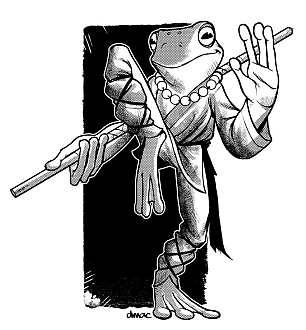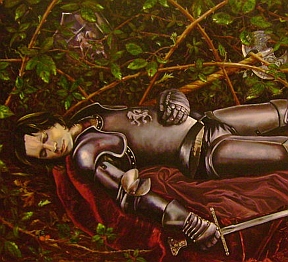I felt like writing up a quick pantheon, so I turned to Chaotic Shiny’s pantheon generator. I sought out new deities a few times, cutting and pasting the names and spheres of influence I thought most interesting until I had 12 gods and goddesses that I could divide into three groups. One Lawful, one of Neutrality, the other of Chaos. Then I added brief descriptions. Here’s the results:
The Lords of Law
Renceth, the God of Prophecy, Friendship, and Keys. Renceth knows the future, but he does not freely share that knowledge. Instead, he puts into the paths of his faithful the people and the resources necessary to open the doors that will be encountered. Those who ignore Renceth’s gifts find their paths full of obstacles whereas the observant find their paths full of opportunities.
Taiath, the God of the Underworld. Taiath judges the souls of the dead on the Balance. Those who tip the scales toward Lawful are rewarded with the ineffable joys of the heavenly realms. Those who tip the scales toward Chaos are plunged into the terrors of the hells. Those who do not tip the scales at all wander the purgatorial fields in between.
Veshah, the Goddess of Good, Archery, and Music. Veshah represents the good things in life. She defends her commmunity with her bow and arrows, and she enriches the spirit with her music. Complex exhibitions of orchestral archery are part of Veshah’s high rites.
Zazic, the Goddess of Knowledge. Zazic collects and collates everything that can be known. She reveals the patterns within disciplines and the relationships between fields of knowledge.
The Watchers
Alousavn, the God of Inspiration. Alousavn grants flashes of insight and motivation to achieve. He is favored by poets, musicians, artisans, inventors, and those in need of hope.
Droainon, the Goddess of Water and Sorrow. Droainon causes rivers to flow, tides to rise and fall, and rain to fall. She also helps her faithful give testimony to their sorrow through the cleansing wash of their tears. She represents both that which is necessary for life and the pain that life inevitably entails.
Kulloe, the God of Magic. Kulloe taught the first magic-users the secrets of wizardry, and to this day he watches those who delve into such secrets. He seldom interferes with how those secrets are used unless a magic-user brings shame upon the arcane arts.
Tourr, the Goddess of Abundance and Fate. Tourr chooses who prospers and who doesn’t. She rewards her faithful as she sees fit. It is the faithful one’s task to grapple with and to accept the consequences of Tourr’s decisions.
The Havoc
Cro, the God of Truth, Chaos, and Opposites. Cro always speaks the truth. Cro always lies. Cro stands firm against what is evil. Cro revels in evil, his hands stained with innocent blood. Cro is all things, and all things are Cro.
Moannah, the Goddess of Desire. Moannah gently kindles the embers of desire, nurturing the warmth of wanting. She adds fuel to the fire, stoking it with jealousy, greed, and obsession. She turns desire into an all-consuming fire.
Seskoe, the Goddess of Winter, Witches, and Creation. Seskoe turns water to ice, rain to snow, and sorrow to callousness. She is served by witches who seek to swallow life’s warmth. At the same time, Seskoe represents creation, but devoid of the light of inspiration. She creates without originality or love for her creations.
Tronsos, the God of Thieves and Beauty. Tronsos doesn’t reward his faithful. Instead, his faithful take their rewards from those unable to keep them from being taken. Of all rewards, beauty is the most prized, and beauty must be possessed and hidden away, safe from covetous eyes.
Tags: fantasy pantheon, Swords & Wizardry
 Are you unfamiliar with the work of Darren M. A. Calvert? If so, you owe it to yourself to reverse that sad situation. Today’s creature is inspired by Darren’s Shaolin frog picture, featured with his kind permission to the right of these words.
Are you unfamiliar with the work of Darren M. A. Calvert? If so, you owe it to yourself to reverse that sad situation. Today’s creature is inspired by Darren’s Shaolin frog picture, featured with his kind permission to the right of these words. The House
The House Okay, I admit it. I love Grace Jones. Well, not her personally. We’ve never met, although I have seen her once in concert in a nightclub in Oaha, Hawaii. But I do love her music, her voice, and I find her various presentations of herself fascinating. How I could not turn Grace Jones into a demonic servitor of the god of deceit?
Okay, I admit it. I love Grace Jones. Well, not her personally. We’ve never met, although I have seen her once in concert in a nightclub in Oaha, Hawaii. But I do love her music, her voice, and I find her various presentations of herself fascinating. How I could not turn Grace Jones into a demonic servitor of the god of deceit? For Swords & Wizardry:
For Swords & Wizardry: